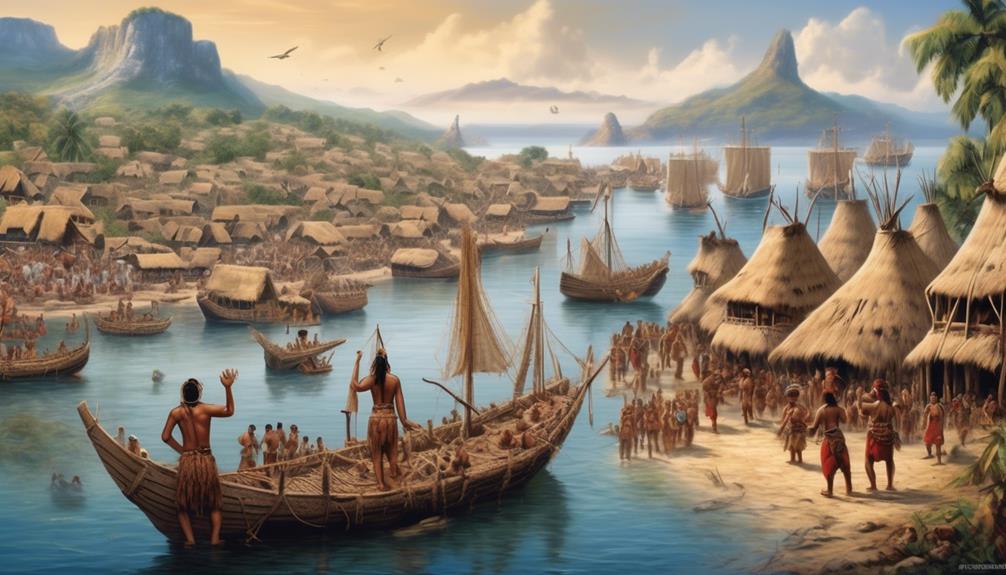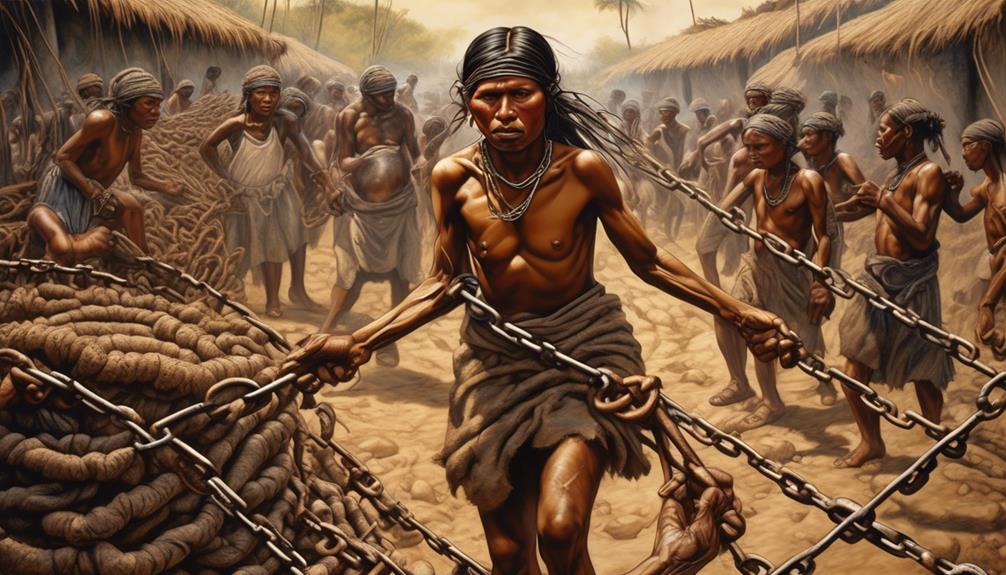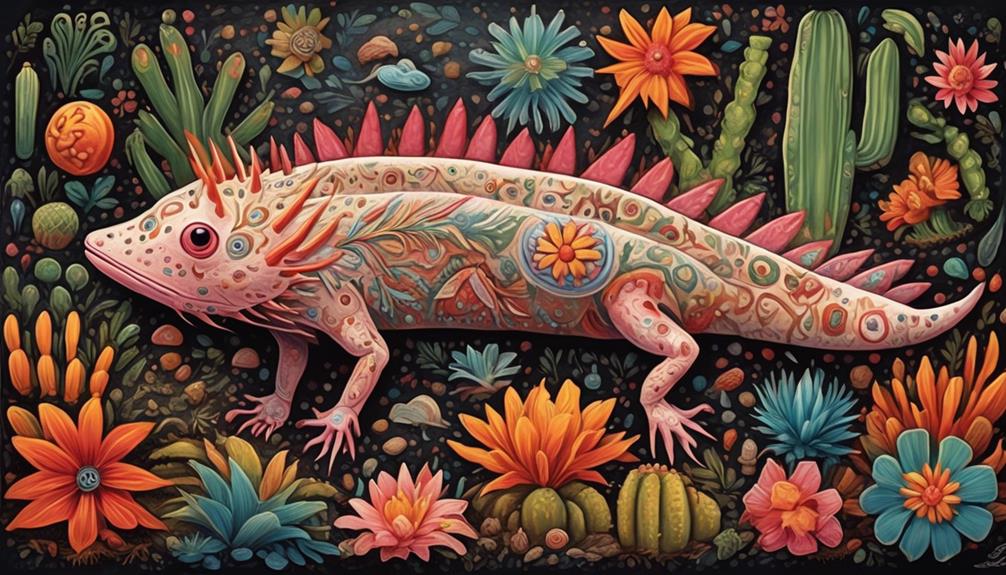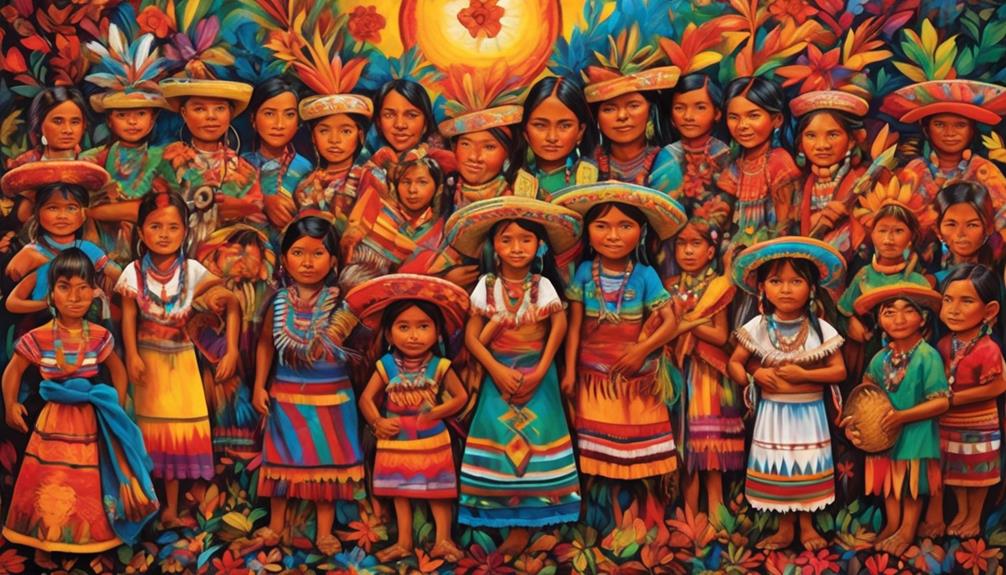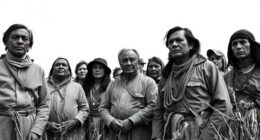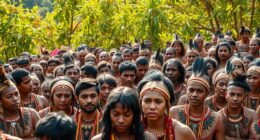How did European interaction impact native populations?
The arrival of European explorers and settlers in the Americas, Africa, and Oceania had profound and lasting effects on the indigenous populations.
From the spread of diseases to the economic exploitation and trade, the impact of European contact on indigenous peoples was multifaceted and far-reaching.
However, it's essential to understand the complexities and nuances of these interactions to fully comprehend the lasting implications for indigenous communities around the world.
Key Takeaways
- European contact with indigenous peoples had devastating consequences for their health, as diseases like smallpox and measles spread rapidly due to lack of immunity, leading to high mortality rates and overwhelming traditional healing practices.
- The loss of ancestral lands and resources through forced displacement and broken treaties disrupted traditional ways of life, severed cultural and spiritual connections, and contributed to socio-economic disparities and environmental degradation.
- Cultural assimilation and displacement eroded the social fabric and identity of indigenous communities, as they faced pressure to assimilate into European ways of life, resulting in a sense of disconnection and loss. However, many indigenous groups managed to preserve their cultural heritage through oral traditions, ceremonies, and art forms.
- European contact brought about economic exploitation and trade dynamics, disrupting indigenous trade networks and coercing them into unfair trade agreements. Indigenous labor was also exploited, leading to a depletion of populations and erosion of cultural practices. Additionally, European political systems and legal concepts eroded indigenous political autonomy and governance structures. However, indigenous communities have shown resilience in preserving their cultural heritage and political autonomy through ongoing efforts to reclaim traditional governance structures and revitalize cultural practices.
Spread of Diseases
The spread of diseases, such as smallpox and measles, had devastating consequences for indigenous peoples upon European contact, leading to significant population declines and societal disruptions.
In examining the impact on healthcare, it becomes evident that the indigenous populations lacked immunity to these foreign diseases, resulting in high mortality rates. Unlike the Europeans, who'd developed some level of immunity through previous exposure, indigenous communities were at a severe disadvantage. This stark contrast in immunity levels contributed to the population decline experienced by indigenous peoples.
Furthermore, the societal disruptions caused by these diseases were profound. Traditional healing practices were overwhelmed, and the loss of knowledge keepers further impacted healthcare within these communities. In comparison, the European settlers, with access to more advanced medical knowledge, were better equipped to manage the impact of these diseases. This disparity in healthcare capabilities deepened the rift in population decline between the two groups.
Thus, the spread of diseases had far-reaching implications, disproportionately affecting the healthcare and population decline of indigenous peoples.
Loss of Land and Resources
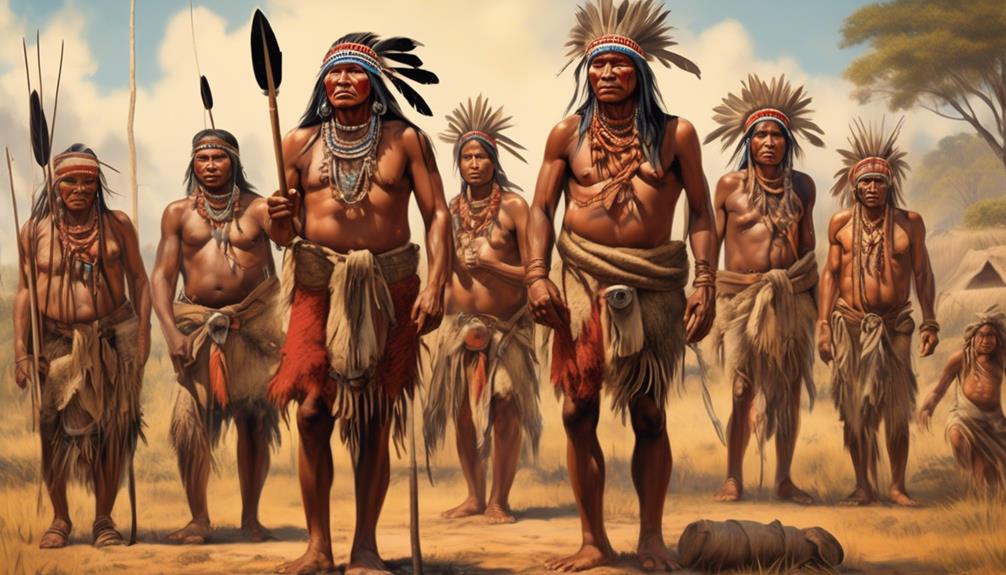
As we explore the impact of European contact on indigenous peoples, it becomes evident that the devastating spread of diseases was just the beginning; the loss of land and resources further exacerbated the challenges faced by these communities.
The process of land dispossession inflicted profound and lasting harm. Indigenous peoples were dispossessed of their ancestral lands through forced displacement, broken treaties, and violent seizures. This loss of land not only disrupted their traditional ways of life but also severed their deep spiritual and cultural connections to the land.
Furthermore, the European arrival led to extensive resource extraction, where natural resources vital to indigenous communities' livelihoods were exploited without regard for their sustainability or the well-being of the indigenous peoples. This not only depleted crucial resources but also disrupted the delicate ecological balance that indigenous communities had long maintained.
The effects of land dispossession and resource extraction continue to reverberate through indigenous communities, contributing to socio-economic disparities and environmental degradation that persist to this day.
Understanding the historical and ongoing impacts of these processes is essential for comprehending the challenges faced by indigenous peoples and working towards meaningful redress.
Cultural Assimilation and Displacement
Cultural assimilation and displacement significantly altered the social fabric and identity of indigenous communities. The impact of European contact led to a clash of cultures, where indigenous peoples faced immense pressure to assimilate into the European way of life. This often resulted in the erasure of traditional customs, languages, and belief systems, causing a profound disruption to the indigenous social structure. The trauma of displacement was exacerbated by the loss of ancestral lands and the forced relocation to unfamiliar territories, leading to a profound sense of disconnection and loss.
However, it's essential to acknowledge the resilience and resistance displayed by many indigenous communities in the face of cultural assimilation and displacement. Despite the overwhelming pressure to conform, many indigenous groups fiercely held onto their traditions and values, preserving their cultural heritage through oral traditions, ceremonies, and art forms.
The legacy of cultural assimilation and displacement continues to impact indigenous communities today, as they navigate the ongoing challenges of preserving their traditional ways of life while also engaging with the modern world. The scars of displacement trauma run deep, but the resilience and resistance of indigenous peoples offer hope for the preservation and revitalization of their rich cultural identities.
Economic Exploitation and Trade
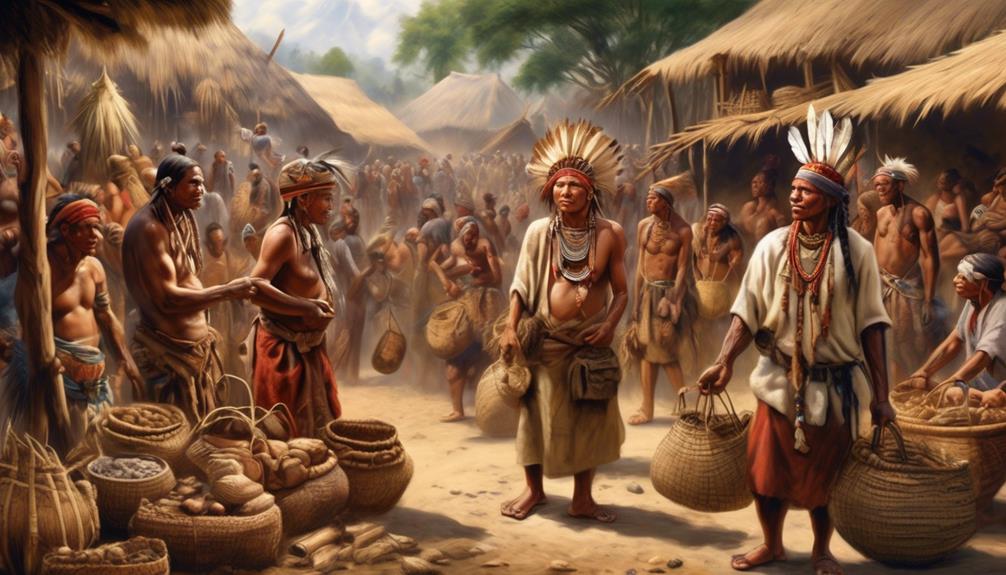
Having explored the profound impact of cultural assimilation and displacement on indigenous communities, we now turn our focus to the complex dynamics of economic exploitation and trade brought about by European contact. The repercussions of colonial trade and labor exploitation have been deeply ingrained in the historical narrative of indigenous peoples, leaving lasting effects that continue to shape their socio-economic realities.
- Colonial Trade:
- The introduction of European goods and the shift from indigenous barter systems to a European-based market economy disrupted traditional trade networks.
- Indigenous peoples were often coerced into unfair trade agreements, resulting in the depletion of their resources and economic independence.
- Labor Exploitation:
- European colonial powers exploited indigenous labor for various industries, including mining, agriculture, and construction.
- This exploitation led to the depletion of indigenous populations and the erosion of their cultural practices.
The comparison of pre and post-contact economic structures reveals the intricate ways in which indigenous communities were marginalized and exploited. Understanding the historical context of colonial trade and labor exploitation is crucial in comprehending the enduring economic disparities faced by indigenous peoples today.
Social and Political Impacts
The social and political impacts of European contact on indigenous peoples are multifaceted and continue to shape their communities in diverse ways.
European contact often led to significant changes in the social structures of indigenous communities. The introduction of European political systems and social hierarchies disrupted traditional governance and social organization. This often resulted in power struggles and internal conflicts within indigenous societies as they navigated the new political landscape imposed upon them.
Additionally, the imposition of European legal systems and land ownership concepts had profound effects on indigenous political autonomy. Many indigenous groups faced the loss of their ancestral lands and the erosion of their political authority.
However, despite these challenges, indigenous communities have shown resilience in preserving their cultural heritage and political autonomy. Efforts to reclaim traditional governance structures and revitalize cultural practices have been ongoing. Many indigenous groups have also been actively involved in political movements to assert their rights and regain control over their lands.
The struggle for cultural preservation and political autonomy remains a central issue for indigenous peoples impacted by European contact.
Frequently Asked Questions
How Did European Contact Impact the Spiritual and Religious Beliefs of Indigenous Peoples?
European contact significantly impacted the spiritual and religious beliefs of indigenous peoples.
The arrival of Europeans led to the disruption and suppression of indigenous rituals, ceremonies, and spiritual practices.
Many indigenous religious beliefs and practices were undermined or replaced by European Christian ideologies.
This resulted in a loss of traditional spiritual knowledge and practices, as well as a significant cultural and identity shift for indigenous communities.
What Long-Term Effects Did European Contact Have on the Traditional Knowledge and Practices of Indigenous Communities?
European contact significantly impacted the traditional knowledge and practices of indigenous communities. The impact on language was profound, leading to the erosion of indigenous languages and the loss of vital cultural knowledge.
This erosion weakened the transmission of traditional practices and knowledge within indigenous communities, resulting in a long-term disruption of their cultural continuity. The consequences were far-reaching, altering the very fabric of indigenous societies and their interconnectedness with the natural world.
How Did the Introduction of European Goods and Technology Affect the Traditional Way of Life of Indigenous Peoples?
The introduction of European goods and technology had a profound impact on the traditional way of life of indigenous peoples. It forced us to adapt to new tools, trade systems, and ways of living. This disrupted our traditionalism and forced us to change our methods of survival.
The impact of this technological shift was significant, altering our cultural practices and creating a new dynamic within our communities.
What Role Did Indigenous Resistance and Adaptation Play in Response to European Contact?
Indigenous resistance played a crucial role in response to European contact, as communities fought to preserve their autonomy and cultural traditions.
Simultaneously, cultural adaptation emerged as a strategy to navigate the new dynamics introduced by European presence.
These responses were complex and varied across different indigenous groups, reflecting the diverse ways in which communities grappled with the challenges and opportunities brought about by European contact.
How Did European Contact Impact the Gender Roles and Family Structures Within Indigenous Communities?
When examining gender roles and family structures within indigenous communities, it's crucial to consider the impact of European contact. Cultural assimilation often disrupted traditional roles and dynamics, leading to shifts in social structures.
Gender roles were redefined, and family units underwent significant changes. By analyzing the effects of European contact on these aspects, we gain a deeper understanding of the complex interplay between indigenous cultures and external influences.
Conclusion
In conclusion, the impact of European contact on indigenous peoples was profound and far-reaching.
The spread of diseases devastated populations, leading to loss of land and resources.
Cultural assimilation and displacement caused social and political upheaval.
Economic exploitation and trade further marginalized indigenous communities.
These factors coincided to create a complex web of challenges that continue to shape the lives of indigenous peoples today.
